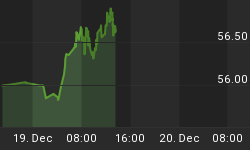It's been a month now that investors and analysts have been closely watching two main drivers for oil prices: how OPEC is doing with the supply-cut deal, and how U.S. shale is responding to fifty-plus-dollar oil with rebounding drilling activity. Those two main factors are largely neutralizing each other, and are putting a floor and a cap to a price range of between $50 and $60.
The U.S. rig count has been rising, while OPEC seems unfazed by the resurgence in North American shale activity and is trying to convince the market (and itself) and prove that it would be mostly adhering to the promise to curtail supply in an effort to boost prices and bring markets back to balance. In the next couple of months, official production figures will point to who's winning this round of the oil wars.
This would be the short-term game between low-cost producers and higher-cost producers.
In the longer run, the latest energy outlook by supermajor BP points to another looming battle for market share, where low-cost producers may try to boost market shares before oil demand peaks.
BP's Energy Outlook 2017 estimates that there is an abundance of oil resources, and "known resources today dwarf the world's likely consumption of oil out to 2050 and beyond".
"In a world where there's an abundance of potential oil reserves and supply, what we may see is low-cost producers producing ever-increasing amounts of that oil and higher-cost producers getting gradually crowded out," Spencer Dale, BP group chief economist said.
In BP's definition of low-cost producers, the majority of the lowest-cost resources sit in large, conventional onshore oilfields, particularly in the Middle East and Russia.
Although this view that low-cost producers would try to seize more market share comes from an oil major with significant interests in Russia and Iraq, for example, BP may not be wrong in predicting that the abundance of oil resources would prompt the lowest-cost producers to pump the most out of low-cost barrels before the world starts to unwind from too much reliance on oil.
Oil demand growth is expected to slow down in the years to come. BP pegs the cumulative oil demand until 2035 at around 700 billion barrels, "significantly less than recoverable oil in the Middle East alone."
Middle East OPEC production growth would account for all OPEC output growth by 2035, BP reckons, noting that other OPEC production typically has a higher cost base and its market share would drop.
The U.S. liquids production is expected to rise by 4 million bpd to 19 million bpd by 2035, with growth mostly in the first half of the period, driven by tight oil and NGL output.
So, both OPEC's Middle East members and the U.S. are seen increasing oil and liquids production in the next two decades.
However, OPEC - especially Saudi Arabia - has the recent bitter experience of its pump-at-will policy for market share backfiring on its economy when oil prices crashed.
Another market-share war would involve too many unknowns, including supply-demand basics, leaner and meaner non-OPEC producers, oil price effects on oil-revenue-dependent economies, or rationale for investments in higher-cost areas.
OPEC's decision to deliberately cut supply and abandon the strategy of pursuing market share at all costs is currently benefiting the cartel's competitor, U.S. shale.
Commenting on OPEC's current and future relevance and influence on the oil markets, Wood Mackenzie said in an analysis last week:
"The group may still be able to control oil prices to a limited degree, but the benefits of that control will accrue to parties outside the cartel. If OPEC remains a functional entity by the end of 2017, its greatest hits will surely be in the past."
Five or ten years from now, a possible market share 'oil war' would take place on a totally different battleground, and some regiments or battalions may lack essential armory to wage such war.
Link to original article: http://oilprice.com/Energy/Crude-Oil/The-Oil-War-Is-Only-Just-Getting-Started.html
By Tsvetana Paraskova for Oilprice.com















